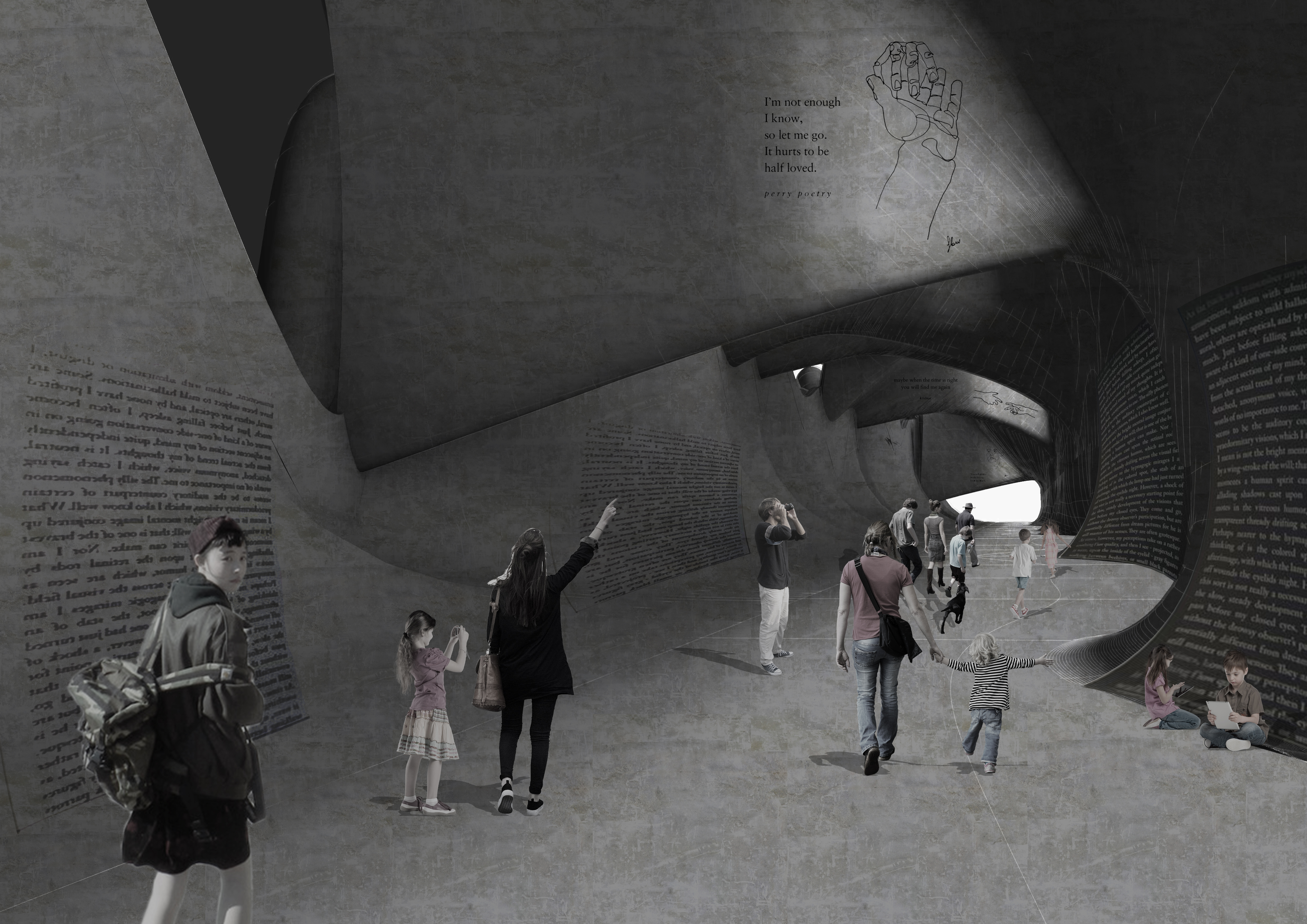Finally, I try to apply this design system into different context. I chose an ancient Tang poem qiangjinjiu from Libai and a sonnet from Shakespeare as ‘sites’ to do a museum of poetry.
In Chinese poem, an important feature is rhyme. Sentences with the same rhyme can be divided into one group. According to the rhyme group, we can get the syllables order and space forms. The phonetic drawings connect to each other. After lofting, I can get sets of spacial sequences. Same method to English. Each line has ten syllables, in reading each second syllable for stress. The rhymes are arranged as ABAB, CDCD, EFEF, GG into four groups.


Each line in one rhyme group is connected as a long walkway. Then the end of the walkway is lifted up 10 meters, so it becomes a sloping ramp. Every rhyme means the pause in the poem. These pause make the sequence turn, and finally get a spiral walkway.
By putting the two groups of spatial sequences together, I can have the circulation in the museum. Then each group can be contained in a 20-meter-hight box.These boxes are stacked together, resulting in some courtyards and gray space in different sizes. After adjustment, the museum can be totally organized based on the poetry circulation. The long corridors are also places for exhibition.












